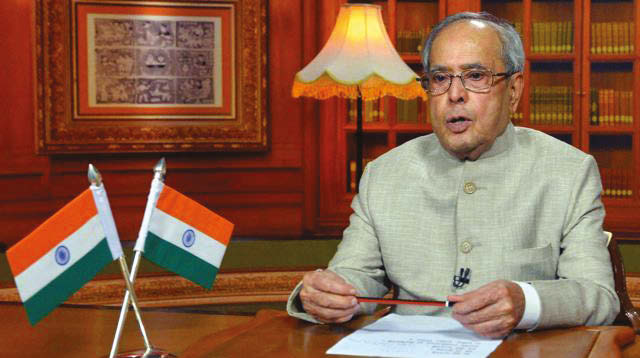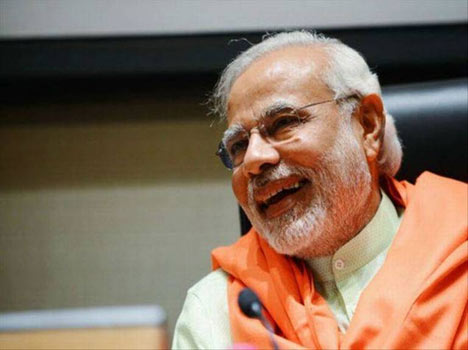
Yahoo recently said that ‘cow’ pipped all other contenders in 2015 to emerge as the personality of the year in India.
“In an unexpected twist, the humble ‘cow’ emerged as ‘Personality of the Year’, trumping other high-profile contenders for the top spot,” Yahoo said in a statement on its “Year in Review” for India which captures the year’s top trends, happenings and events.
“It started with the Maharashtra government announcing a ban on sale of beef in the state — a move which led to massive debates online and offline, spiraling into the ‘beef controversy’,” it said.
The Dadri mob lynching, award wapsi –eminent writers returning national awards –and numerous discussions centered on ‘intolerance’ further propelled the bovine to claim the overall top spot, the statement said.
When the idea of crowning the cow as the ‘Personality of the Year’ was first proposed, it met with equal parts scorn and mockery, condescension and astonishment, excitement and amusement.
After all, traditional wisdom mandates that lofty-sounding appellations be the exclusive preserve of humankind and not be conferred upon bovine stock.
Yet, prudence demands that the title belong to the one ‘being’ that had the most significant impact on a variety of matters, dominated national debate, pervaded general consciousness, evoked passion, initiated protests, stalled work, and set the social media afire, among other things.
The list of the prime contenders for the title had political bigwigs, matinee idols, sports icons…
Some of the distinguished names that were considered included Prime Minister Narendra Modi, Delhi Chief Minister Arvind Kejriwal, Bihar Chief Minister Nitish Kumar, actors Deepika Padukone, Salman Khan, Aamir Khan and Shah Rukh Khan, cricketers M S Dhoni and Virat Kohli, social workers, human-, women- and child-rights activists, litterateurs….
But, finally pragmatism beat custom and the docile cow pipped big guns to the post.
Had the dove not been recognized as the universal symbol of peace, the cow would most certainly have donned that mantle. Yet, this gentlest of creatures was at the center of a violent, political, social and legal firestorm throughout 2015.
The humble herbivore was wrenched away from its pastoral idyll and then savagely flung it into a bloody battlefield. This brought legislation to a standstill, impeded the growth of pace of a nation desperately in need of sustained and uninterrupted development, polarized the society and the social media into two distinctly combative factions, dominated television debates and newspaper columns, sparked off violent acts of crime across the country, united a disruptive opposition, exposed an unyielding government, and disturbed the nation’s peace as the minority community expressed fear and concern over what was termed as rising intolerance.
It all started with a ban on beef. The anti-cow slaughter movement had begun to intensify and spiral out of control. While cow-slaughter is banned in most parts of India, some states insisted on strict implementation of the ban and also imposed 10-year jail for those who are found guilty of slaughtering a cow, a bull or an ox, or caught eating or carrying beef.
Many Hindus have considered the humble cow a sacred animal. The cow enjoys an exalted status in society: it is worshipped, is seen as a mother who provides for the family it resides with, is thought to be divine. All this, ostensibly, for economic and social reasons. Its protection thus is a matter of ‘honor’ for many Hindus.
Beef ban gave rise to vigilantism and pro-beef protests that began to spread across the nation. Soon cow protection groups sprang up – many of them allegedly spreading rumors against those who partake of beef -to save ‘mother cow’. This met with an equally potent and, at times, violent response.
There are doubts if the nation’s beef with beef is more an economic, cultural, legal and social argument or purely a religious dispute. Is it the way for the majority to assert itself over the beef-eating minorities? Or is it just a matter of respecting or insulting the sentiments of a large section of society?
The cow can barely answer that. From a simple bovine it has been metamorphosed into a hardcore political symbol, a polarizing beast: a sort of a representation of the might of the majority leading to political slugfests, legal wrangles, social unrest, economic intimidation and ‘intolerance’ perceived by both sides of the divide.
As was wont to happen, soon, in a horrific incident, a 50-year-old man in Dadri in Uttar Pradesh was lynched by a mob over rumors that he and his family were eating and storing beef at home. He was murdered and his son beaten to within an inch of his life over lies spread by goons.
This sparked off national outrage, uniting the opposition parties against the ruling central government and igniting passionate debates, many of which were understandably political in nature.
Close on the heels of Dadri, right wing activists roughed up an independent legislator in Kashmir for hosting a beef party. In Delhi, a posse of cops raided Kerala House over the allegation that beef was being served there. It later transpired that the canteen there only offered buffalo meat and not beef. In India, the buffalo does not enjoy the illustrious standing that the cow revels in.
In Himachal Pradesh, a young many was killed under the suspicion of smuggling cows for slaughter. Yet another man was butchered in Karnataka for opposing illegal abattoirs.
With political opponents baying for his blood, the prime minister decided to take the bull by the horns and broke his silence over the issue. But that did not yield desired results.
By this time, the problem had snowballed into an unmanageable controversy. Dozens of literary figures jumped in to the fray and began to return their prestigious awards, protesting against intolerance. Scientists and other intellectuals followed suit.
Film personalities too joined the bandwagon, creating an unprecedented schism in Bollywood and adding to the shrillness of the arguments.
While decibel levels of television debates acquired unbearable proportions and political name-calling became de rigueur, social media platforms exploded into an all-out war with pro- and anti-beef groups trading nauseating invectives and shocking threats.
Opinion was sharply divided: those against the protests asserted that the demonstrations were all related to the then impending Bihar elections; those protesting feared that the secular fabric of India was being ripped apart.
A defensive government had offered opposition parties an issue to disrupt parliamentary proceedings with incessantly bringing all legislation, reform and progress to a halt. Not a single day’s of business was allowed inside Parliament as lawmakers continued to pillory a beleaguered government.
Meanwhile, all through the raging storm the ruminating cow continued to stand by with the stoicism that is a bovine hallmark.
Whether it is the last we have heard on this is moot and can be debated till the cows come home, but that the quadruped had a huge, perhaps the biggest, impact on India in 2015 cannot be denied.





Be the first to comment